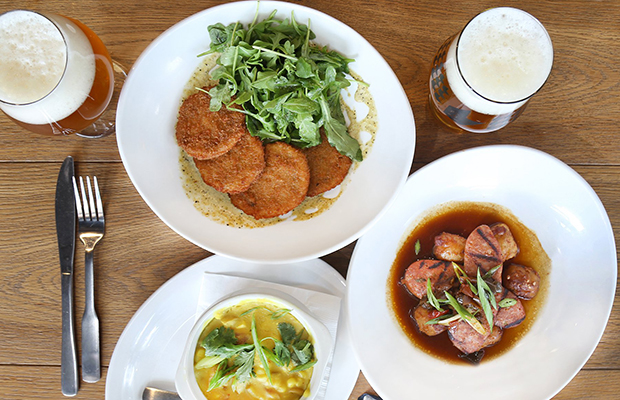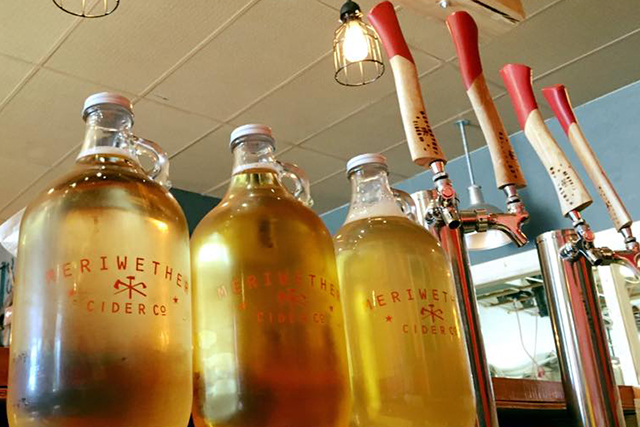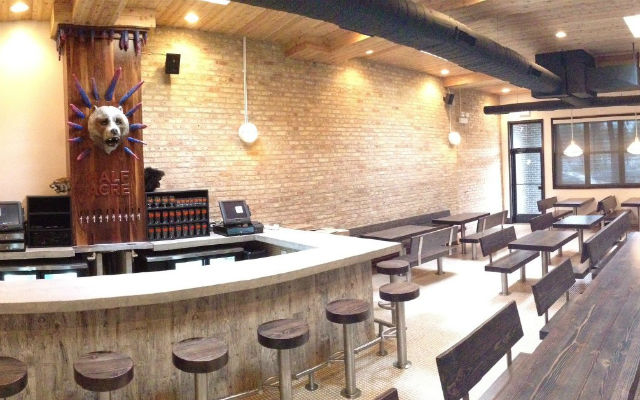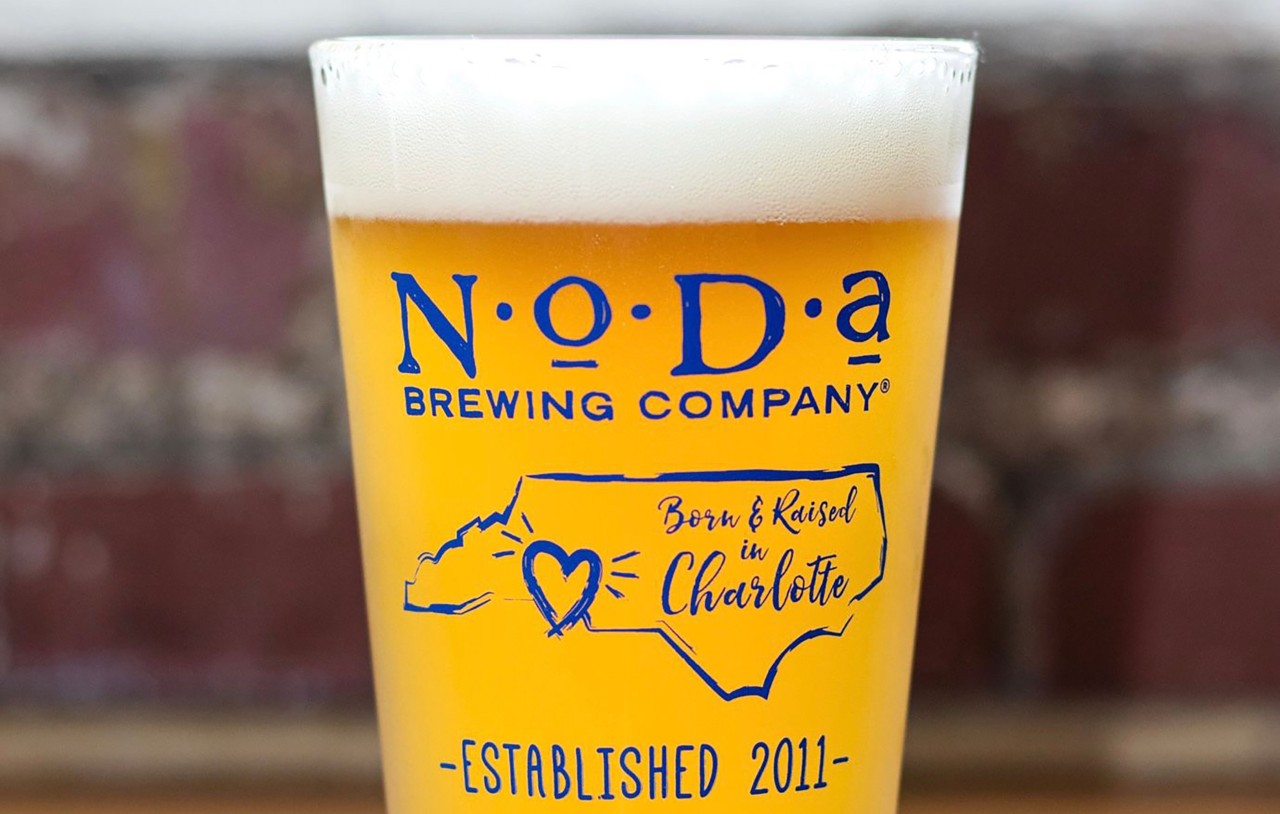
Adding food to your brewery can be a valuable factor in widening your consumer base in that it can attract a more family-friendly customer. Brewpubs do have their own unique challenges apart from regular breweries, between not only brewing great beer but also running a successful restaurant simultaneously. That hasn’t stopped trends in the past ten years, which show exponential growth of brewpubs in the United States.
Westbound and Down Brewing Company of Idaho Springs, Colorado (about 40 minutes from downtown Denver), had sort of a backward start to other brewpubs.
The Westbound and Down ownership team saw an opportunity when the Buffalo Restaurant and Bar closed for renovations in 2014, and the adjacent building became available for sale. The owners of the Buffalo Restaurant and Westbound teamed up to create a brewpub.
For Westbound and Down, which opened as a brewpub in 2015, the goal from day one was to provide world-class beer, food, service and design in the business.
“The intent was always to maintain the Buffalo’s iconic feel as a bar since it has been a regular watering hole for the people of Idaho Springs for decades,” Phil Joyce said, Head of Experimental Projects at Westbound & Down. “The Westbound and Down side has a much more clean and modern feel, but the beer, food and drink menus are the same and served at all of the seats in the building.”
After four years in Idaho Springs, Westbound and Down is looking to expand into Denver, with a brewpub slated to open in 2020.
“We serve elevated pub fare with a focus on utilizing local and seasonal ingredients in creative ways,” Joyce said. “We have suggested beer pairings for every food item on the menu and utilize beer as an ingredient in many of the sauces and dressings.
“In addition, we are constantly developing and expanding our beer server education programs to develop a culture of better beer and food education and offering the best possible experience to our customers.”
According to the Brewers Association, brewpubs were up nearly 15 percent by volume in 2016. In 2017, 64 brewpubs closed, while another 264 opened, bringing the total above 2,000 brewpubs in operation in the US for the second year in a row.
In 2018, brewpubs were up 13 percent from the previous year, according to Brewers Association chief economist Bart Watson, and much of that growth is from new openings. There were 2,594 in operation, with 322 openings that year.
Wachusett Brewing Company has quite a different story. The brewery, which opened in 1994 in Massachusetts through the combined efforts of three college friends, didn’t initially have food, per state law.
It wasn’t until December 2017, when new legislation allowed Wachusett to open a brew yard. The brewery, anticipating the change, opened the kitchen the day after the law went into effect.
“The value of every customer that comes in here when they leave is exponentially greater if they have a great experience,” said President Christian McMahan. “And so our focus really is making sure they have a great experience.”
The family-friendly brew yard allows dogs and children, and offers live music to complete that experience.
“This is not about just coming and taste a few beers, but we’re really trying to have them walk away with a positive impression that they certainly take that wherever they go,” McMahan said.
When opening to beer garden, one of the most important things the brewery had to keep in mind was authenticity and staying on brand.
“Authenticity is certainly the way we produce the most,” McMahan added. “Making sure everything we do is true to us and not chasing trends or doing things that we don’t feel are right for us as a brand. And that goes from the beers we make, the food we serve, the entertainment we do.”
To put the growth in perspective, two years ago, Wachusett was outside of the top 100 largest breweries. This past year, Wachusett was ranked as the 43rd largest brewer in the country.
“There is no better brand marketing in the craft beer industry than obviously having a great taproom and creating positive experiences,” McMahan said.
“Usually you come up with marketing plans, like how much money you have to spend in order to sell more product,” he continued, “And now it’s completely different, where you don’t have to necessarily be spending money. It can be break even or maybe even turn a little profit because now you know your No. 1 marketing platform for your brands. And it’s pretty amazing to have that kind of come into play now.”
Initially, Wachusett could give tours, do samplings, but it wasn’t able to have a traditional taproom beer garden experience until the law changed. So originally the focus was on good distribution, key partners, and supporting the business any way possible.
Since the new legislation came into effect, Wachusett is in the process of opening two more taproom beer gardens.
“One thing, you know that a taproom beer garden does is, I always compare it with my staff, like Disney World,” MchMahan said. “You go there, you had this amazing experience and you have your level of admiration for the brand, and it just goes higher and higher every time you go.”
Seasonal changes to the menu allow customers to have unique experiences at the brewery every time they go. Most customers order food to share, and McMahan said there is a certain lightness to the beer that complements the food.
One thing that helps is that the chefs and brew team work closely to bring together a cohesive menu, just one more thing that heightens consumer experiences.
So when customers go into other outlets, McMahan believes that makes the brand more recognizable, which snowballs from there, so that customers get an extra pint or two at a restaurant or buy another six pack at the grocery store.




Be the first to comment